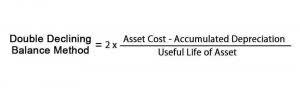
It emphasizes their usefulness in ensuring debits and credits are balanced, especially when multiple accounts are involved. Both formats are useful for representing debits and credits. But t accounts example T-accounts offer a clearer picture of how entries accumulate over time.
- For example, if you want to increase the balance of an account, you could simply credit the account without recording a corresponding debit.
- One of the best accounting software for small businesses today is Deskera.
- On the top, the name of the ledger is mentioned, the left side is for debit entries, and the right side is for credit entries within the ledger.
- A T-Account is a visual presentation of the journal entries recorded in a general ledger account.
- The payment terms of the invoice call for payment to be received in the following 20 days.
Debits and Credits Outline
On a blank piece of paper, draw your three T accounts, making them large enough you can write numbers on either side of the T. That is why we are going back to the basics in this article to re-examine T-accounts. Remember, each account has its own code or number (called a folio number), and this would normally be inserted next to the account name. Let’s try another account from the sample business we’ve been using throughout our lessons, George’s Catering – the “loan” T-account.
#1 – General Ledger
This is posted to the Dividends T-account on the debit side. This is posted to the Cash T-account on the credit side. You will notice that the transactions from January 3, January 9, and January 12 are listed already in this T-account. The next transaction figure of $100 how is sales tax calculated is added directly below the January 12 record on the credit side.

Business Insights
The company now has $20,000 more in cash and $20,000 less in inventory on its books, according to this double-entry system. Well organized T accounts are the first step in the bookkeeping and accounting process. If they are inaccurate or hard to follow, then everything from drafting financial statements to forecasting future revenue growth is in jeopardy. T accounts are clear, visual representations of a business transactions that take the form of a “T” – one side for debits, one for credits. T-accounts are a way to visually show the journal entries that are entered in a business’s general ledger. You know the sum of your debits and credits must match at the end, but so far, you have a 30,000 dollars debit and a 5,000 dollars credit.
And if you look in the “bank” account above, “loan” is inserted on the debit side of the T-account on the same date. Remember, we can easily cross-reference between two accounts because of the contra account being used as the description of the transaction. The balance at the end of a period is called the closing balance. Boost your confidence and master accounting skills effortlessly with CFI’s expert-led courses!
- No matter the size of a company and no matter the product a company sells, the fundamental accounting entries remain the same.
- In the journal entry, Accounts Receivable has a debit of $5,500.
- The contra account here used to describe what occurred is baking equipment.
- If the textbook says “on account”, it means that cash will come later.
- A journal is the first place information is entered into the accounting system.
Payment of Utilities

Businesses don’t typically use T-accounts for daily operations. Instead, ledgers and automated systems handle transaction tracking. Every month £2000 is credited from this account, reducing the asset as I make use of the property.

Why accounts payable T-accounts matter
And right at the bottom of the page, you can find more questions on the bookkeeping for cleaning business topic submitted by fellow students. You have the following transactions the last few days ofApril. You have the following transactions the last few days of April. The T accounts template is available for download in PDF format by following the link below. For the past 52 years, Harold Averkamp (CPA, MBA) hasworked as an accounting supervisor, manager, consultant, university instructor, and innovator in teaching accounting online. He is the sole author of all the materials on AccountingCoach.com.

